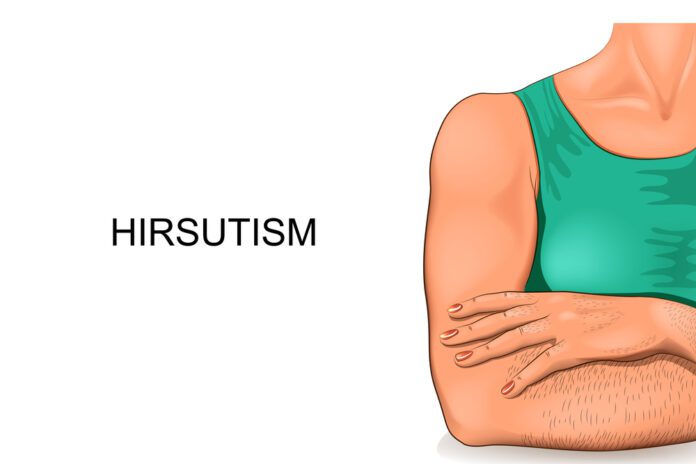Overview Of Hirsutism
Most of the time, women have fine hair above their lips and on their chin, chest, abdomen, or back. The growth of coarse dark hair in these areas (more typical of male-pattern hair growth) is called Hirsutism.
Commonly Associated With
Hypertrichosis; Hair – excessive (women); Excessive hair in women; Hair – women – excessive or unwanted
Causes Of Hirsutism
Women normally produce low levels of male hormones (androgens). If your body makes too much of this hormone, you may have unwanted hair growth.
In most cases, the exact cause is never known. The condition often runs in families.
A common cause of hirsutism is a polycystic ovarian syndrome (PCOS).
Women with PCOS and other hormone conditions that cause unwanted hair growth may also have:
- Acne
- Problems with menstrual periods
- Trouble losing weight
- Diabetes
- If these symptoms start suddenly, you may have a tumor that releases male hormones.
Other, rare causes of unwanted hair growth may include:
- Tumor or cancer of the adrenal gland.
- Tumor or cancer of the ovary.
- Cushing syndrome.
- Congenital adrenal hyperplasia.
- Hyperthecosis — a condition in which the ovaries produce too much male hormones.
Use of certain medicines may also be the cause of unwanted hair growth, including:
- Testosterone
- Danazol
- Anabolic steroids
- DHEA
- Glucocorticoids
- Cyclosporine
- Minoxidil
- Phenytoin
- Female bodybuilders may take male hormones (anabolic steroids), which may result in excessive hair growth.
In rare cases, women with hirsutism have normal levels of male hormones, and the specific cause of the unwanted hair growth cannot be identified.
Symptoms Of Hirsutism
The main symptom of this condition is the presence of coarse dark hair in areas that are sensitive to male hormones.
These areas include:
- Chin and upper lip
- Chest and upper abdomen
- Back and buttocks
- Inner thigh
Exams & Tests
Your health care provider will examine you and ask about your symptoms.
Tests that may be done may include any of the following:
- Testosterone test
- DHEA-sulfate test
- Pelvic ultrasound (if virilization, or development of male characteristics, is present)
- CT scan or MRI (if virilization is present)
- 17-hydroxyprogesterone blood test
- ACTH stimulation test
Treatment Of Hirsutism
Hirsutism is generally a long-term problem. There are many ways to remove or treat unwanted hair. Some treatment effects last longer than others.
Medicines — Drugs such as birth control pills and anti-androgen medicines are an option for some women.
Electrolysis — Electrical current is used to permanently damage individual hair follicles so they do not grow back. This method is expensive, and multiple treatments are needed. Swelling, scarring, and redness of the skin may occur.
Laser energy directed at the dark color (melanin) in the hairs — This method is best for a large area of very dark hair. It does not work on blond or red hair.
Temporary options include:
Shaving — Although this does not cause more hair to grow, it may make hair look thicker.
Chemicals, plucking, and waxing — These options are safe and inexpensive. However, chemical products may irritate the skin.
For women who are overweight, weight loss may be able to help reduce hair growth.



